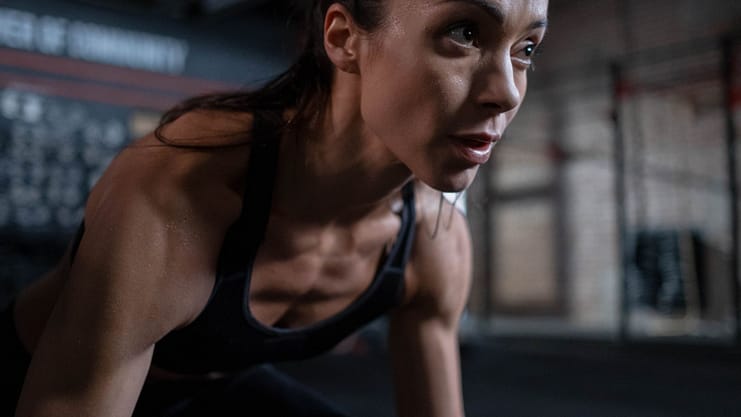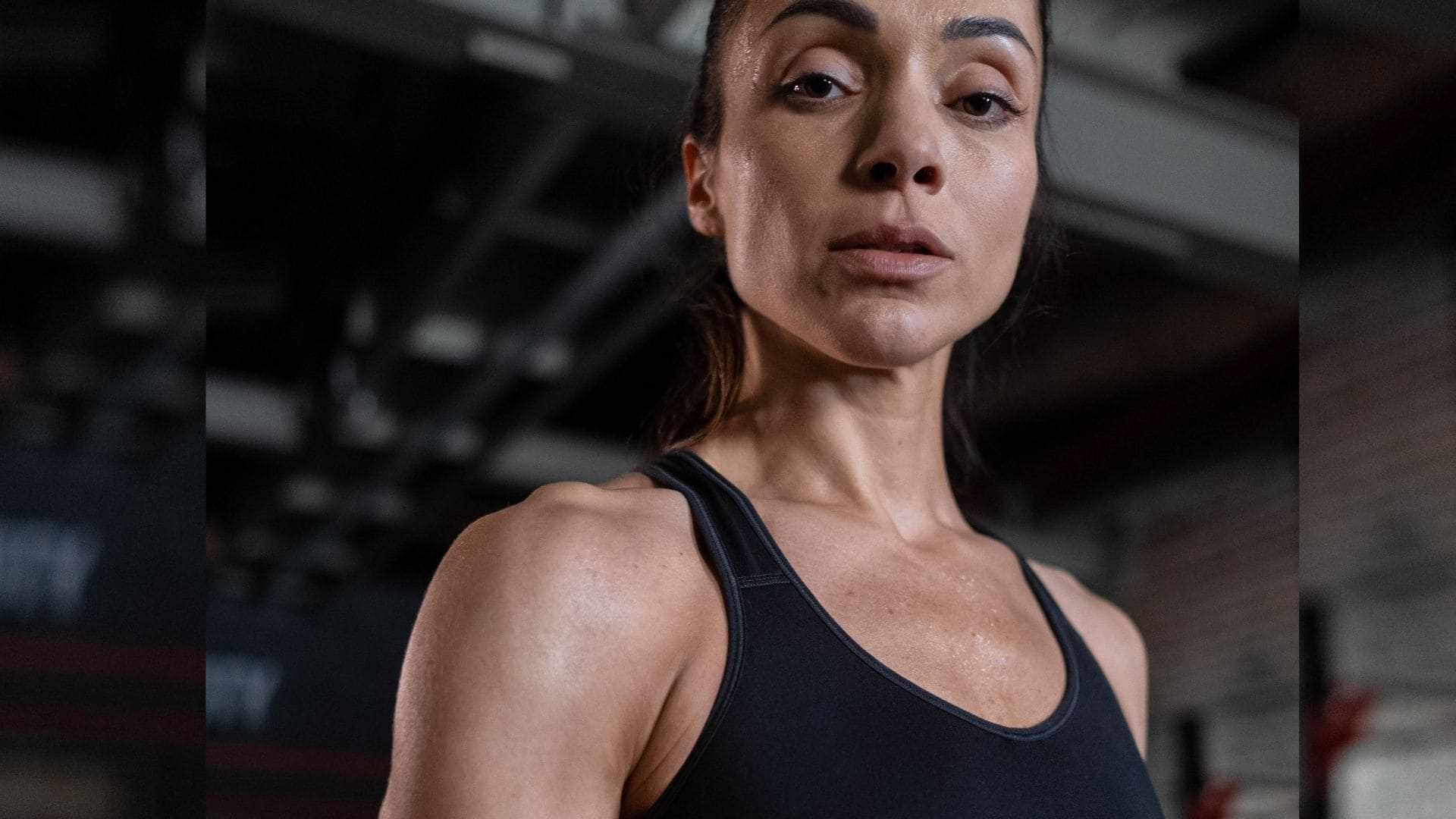Sweating during exercise is a common phenomenon that occurs as our bodies attempt to regulate temperature and cool down.
However, some may find themselves wondering, “Why don’t I sweat when I do squats?” Squats are a popular exercise known for their ability to work multiple muscle groups simultaneously.
In this article, we will explore the reasons behind the lack of sweat during squats and provide insights into the factors that influence sweating during physical activity.
There could be several reasons why you might not sweat while doing squats. Here are a few possible explanations: Intensity. Hydration. Individual Differences. Environmental Factors.
It’s worth noting that sweating itself is not necessarily an indicator of the effectiveness or intensity of your workout. If you have concerns about your exercise routine or overall health, it’s always a good idea to consult with a healthcare professional or a certified fitness trainer.
Intensity.
Here’s the complete explanation:
Sweating is a natural response of the body to regulate its temperature during physical exertion. When you engage in exercise, your body generates heat, and sweating helps to dissipate that heat and cool you down.
During squats, the primary muscles being targeted are the lower body muscles, including the quadriceps, hamstrings, and glutes.
While squats can be intense and demanding for these muscle groups, they may not necessarily elicit a significant sweat response on their own.
However, the intensity of your workout plays a crucial role in triggering sweating. If the overall intensity of your squat workout is not high enough to elevate your heart rate and increase your body temperature, you may not sweat as much.
To enhance the intensity and potentially increase sweating during squats, you can consider incorporating additional exercises or training techniques.
For example, you could combine squats with cardiovascular exercises, such as jumping jacks or burpees, to elevate your heart rate and stimulate sweat production.
You could also increase the resistance by using weights or performing variations of squats like squat jumps or barbell squats.
It’s important to note that sweating alone is not an indicator of the effectiveness of your workout. The benefits of squats go beyond sweating, as they help strengthen and tone your lower body muscles.
If you have specific fitness goals or concerns, consulting with a certified fitness trainer can provide you with personalized guidance and advice.

Hydration level.
Sweating is also affected by your hydration level. When you are adequately hydrated, your body functions optimally, and sweat production is more efficient.
On the other hand, if you are dehydrated or haven’t consumed enough fluids before your workout, your body may conserve water and reduce sweat production.
Proper hydration is crucial for maintaining overall health and supporting bodily functions, including temperature regulation through sweating.
When you’re well-hydrated, your body has enough fluid to produce sweat and cool you down effectively during exercise.
To ensure adequate hydration during your workouts, it’s recommended to drink water before, during, and after your exercise session.
The exact amount of water you need may vary depending on factors such as the duration and intensity of your workout, environmental conditions, and individual differences.
As a general guideline, aiming to drink enough water to satisfy your thirst and maintaining pale yellow urine color can be helpful indicators of hydration status.
It’s important to note that hydration needs may vary for each person, so listening to your body’s signals and maintaining a consistent intake of fluids throughout the day is essential.
If you have concerns about your hydration or fluid intake, consulting with a healthcare professional or a registered dietitian can provide personalized advice based on your specific needs.
Individual Differences.
People have individual differences in their physiological responses to exercise, and this includes variations in sweating patterns. Some individuals tend to sweat more easily and profusely, while others may sweat less.
Genetics, metabolic rate, and overall fitness level can all contribute to these differences in sweat production during physical activity.
Genetic factors can influence the number and activity of sweat glands in your body, which in turn affects how much you sweat.
Some people may have a higher density of sweat glands or more active sweat glands, leading to increased sweat production during exercise.
Metabolic rate also plays a role. People with a faster metabolism tend to generate more heat during physical exertion, which triggers sweating as a means to cool the body down.
As a result, they may sweat more during workouts compared to those with a slower metabolic rate.
Additionally, your overall fitness level can influence your sweat response. Regular exercise and physical training can improve your body’s ability to regulate temperature and cool itself efficiently.
Well-trained individuals often have a more finely tuned sweating response, allowing them to sweat earlier and more effectively during exercise.
It’s important to recognize that sweating itself is a natural and beneficial process that helps maintain body temperature and prevent overheating.
The amount of sweat produced during exercise can vary widely from person to person and doesn’t necessarily indicate the intensity or effectiveness of the workout.
If you have concerns about your sweating patterns or any other aspects of your exercise routine, it’s always a good idea to consult with a healthcare professional or a certified fitness trainer who can provide personalized guidance and address your specific needs.
Environmental Factors.
Environmental factors, such as the temperature and humidity of your workout environment, can influence your sweat production during exercise.
If the room is cool or the air is dry, your body may not need to sweat as much to maintain its temperature.
When you exercise in a warm or hot environment, your body generates more heat, causing your internal temperature to rise.
In response, your body activates sweat glands to produce sweat, which evaporates from your skin and cools you down. This process helps regulate your body temperature and prevent overheating.
However, if the workout environment is already cool, your body may not need to produce as much sweat because the ambient temperature is helping to dissipate heat.
Similarly, if the air is dry, sweat can evaporate more quickly, which may make it less noticeable compared to exercising in a humid environment.
It’s important to note that even if you don’t visibly sweat as much in a cool or dry environment, your body is still working to regulate its temperature internally.
The absence of visible sweat doesn’t necessarily mean that your body is not benefiting from the exercise or that you’re not getting an effective workout.
When exercising, it’s generally recommended to choose a comfortable and suitable environment that allows for proper ventilation and temperature regulation.
This can help optimize your performance and minimize the risk of overheating or dehydration.
If you have concerns about your workout environment or any other aspects of your exercise routine, it’s always a good idea to consult with a healthcare professional or a certified fitness trainer who can provide personalized guidance based on your specific needs and circumstances.
Here’s a tabular format with 20 reasons, explanations of how they relate to sweating during squats, and examples:
| Reason | How it affects sweating during squats | Examples |
|---|---|---|
| Low workout intensity | Insufficient intensity may not trigger significant sweat | Doing squats with minimal resistance or without added challenges |
| Hydration level | Dehydration can reduce sweat production | Not drinking enough water before or during the workout |
| Individual differences | Genetic, metabolic, and fitness factors influence sweat response | Some individuals naturally sweat more or less during exercise |
| Cool environment | A cool room temperature may reduce sweat needs | Doing squats in an air-conditioned gym |
| Dry air | Low humidity levels can lead to faster sweat evaporation | Squatting in a well-ventilated, dry environment |
| Lack of cardiovascular exercise | Limited overall body exertion may result in less sweating | Only focusing on squats without incorporating cardio activities |
| Temperature regulation efficiency | Well-regulated body temperature may require less sweating | Individuals with efficient thermoregulation may sweat less |
| Clothing choice | Breathable and moisture-wicking fabrics can reduce sweat | Wearing lightweight, sweat-wicking workout clothes |
| Fitness level | Higher fitness levels may lead to more efficient sweating | Well-trained individuals tend to have better sweat responses |
| Stress and anxiety | Increased stress levels can affect sweat production | Feeling anxious or stressed while performing squats |
| Medications | Certain medications can influence sweat production | Some medications may cause reduced sweating as a side effect |
| Age | Age-related changes in sweat gland function can impact sweating | Older individuals may experience decreased sweat production |
| Body composition | Different body compositions can affect sweat patterns | Muscle mass, body fat percentage, and overall physique |
| Hormonal factors | Hormonal imbalances can influence sweat production | Fluctuations in hormone levels may affect sweating during squats |
| Metabolic rate | Variances in metabolic rate can impact heat generation and sweat | Individuals with faster metabolism may sweat more during squats |
| Heat acclimatization | Acclimation to heat can increase sweat response | Individuals regularly exposed to hot environments may sweat more |
| Nervous system function | Neurological factors can impact sweat gland activity | Conditions affecting the autonomic nervous system |
| Weather conditions | External weather can affect sweat needs and response | Exercising in hot and humid weather conditions |
| Training adaptations | Adaptation to repeated exercise can alter sweat response | Over time, your body may adjust and sweat less during squats |
| Overall fitness routine | Comprehensive workouts may distribute sweat differently | Combining various exercises in a workout routine |
Please note that this table provides general reasons and examples, and individual experiences may vary. Additionally, it’s important to consult with a healthcare professional if you have concerns about your sweating patterns or overall health.
Conclusion
In conclusion, several factors can contribute to why you may not sweat significantly while doing squats. The intensity of your workout, hydration level, individual differences in sweat response, and environmental factors can all play a role.
If the intensity of your squat workout is not high enough or you primarily focus on lower body muscles, it may not trigger a significant sweat response. Adequate hydration is essential for efficient sweat production, so if you are dehydrated or haven’t consumed enough fluids, your body may conserve water and reduce sweat production.
Individual differences in sweat response are influenced by genetics, metabolic rate, and overall fitness level. Some individuals naturally sweat more easily and profusely during exercise, while others sweat less.
Additionally, environmental factors such as temperature and humidity can affect sweat production. In cooler or drier environments, your body may not need to sweat as much to maintain its temperature.
Remember that sweating alone is not an indicator of the effectiveness of your workout. Squats offer benefits beyond sweating by targeting and strengthening your lower body muscles.
If you have specific concerns about your exercise routine or overall health, it’s always advisable to consult with a healthcare professional or a certified fitness trainer who can provide personalized guidance based on your individual needs.

Hey there, it’s Mike Rrsq, the Editor-in-Chief over at Jsquat.com, and I’m absolutely obsessed with all things squat fitness! I’ve been lucky enough to get some serious recognition for my work in this field. With a solid background in the fitness and wellness industry, I’ve been there right from the get-go, helping shape this website into what it is today.
You see, I’m not just the boss around here; I’m also a passionate contributor. I love sharing my insights through my articles, and trust me, they’re not your run-of-the-mill stuff. Each piece I write is a labor of love, filled with my expertise and real-world experience in the fitness universe. So, if you’re into fitness and looking for some inspiration, you’re in the right place!


